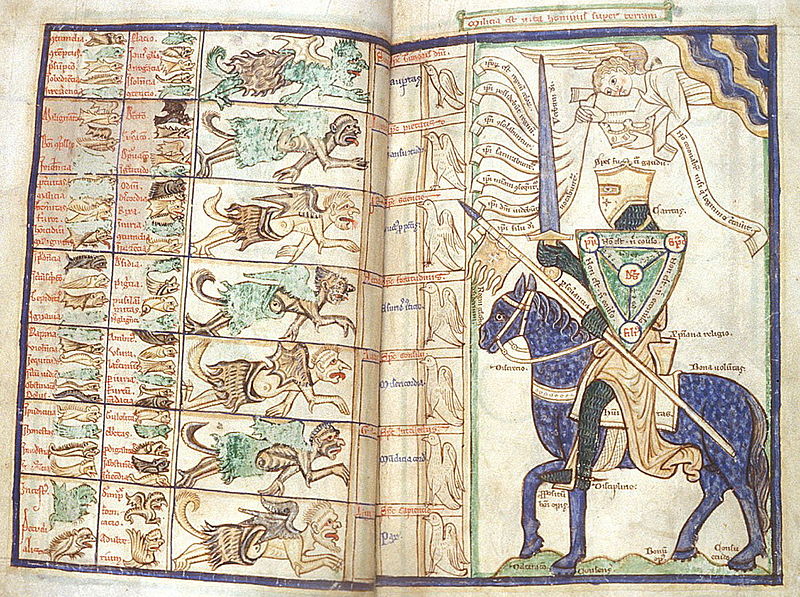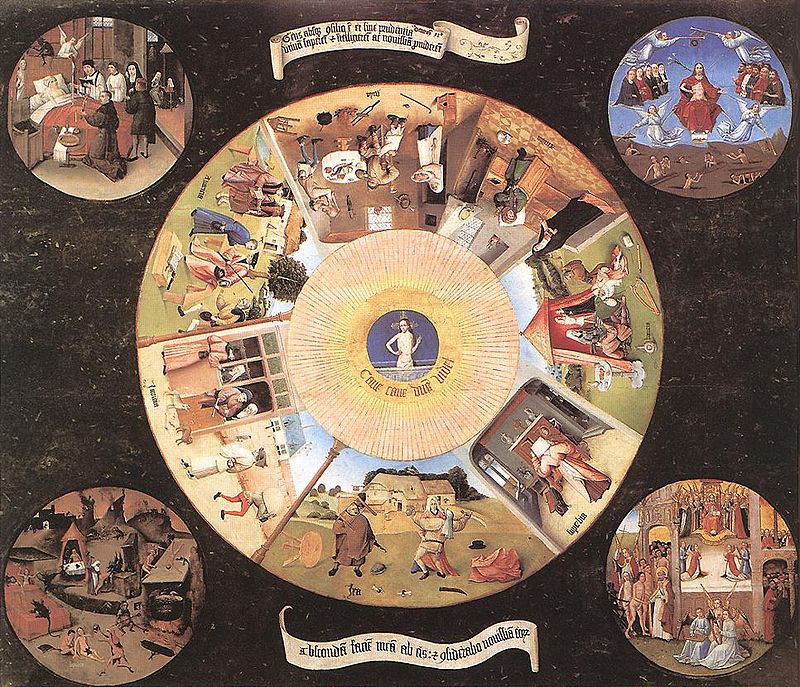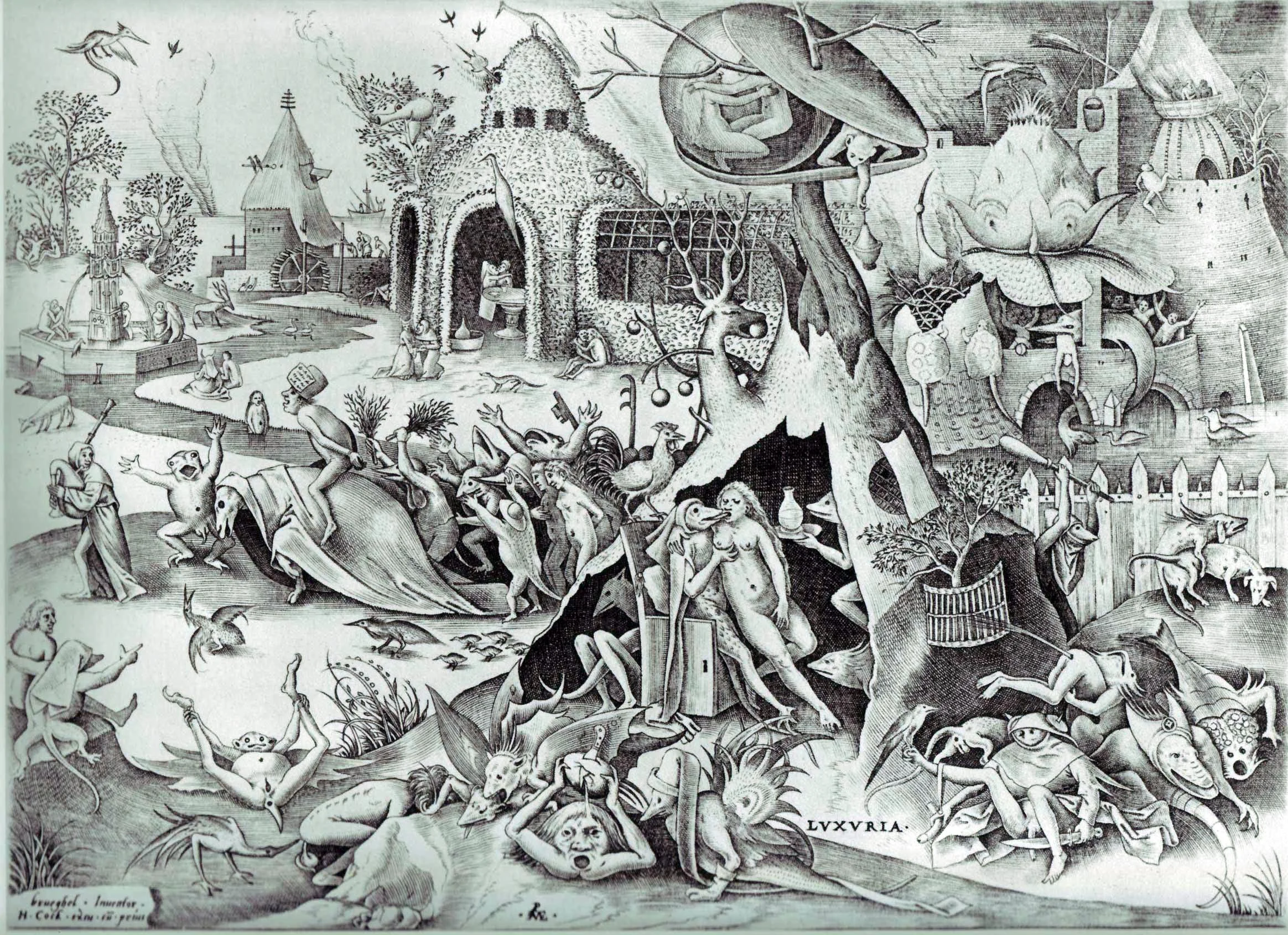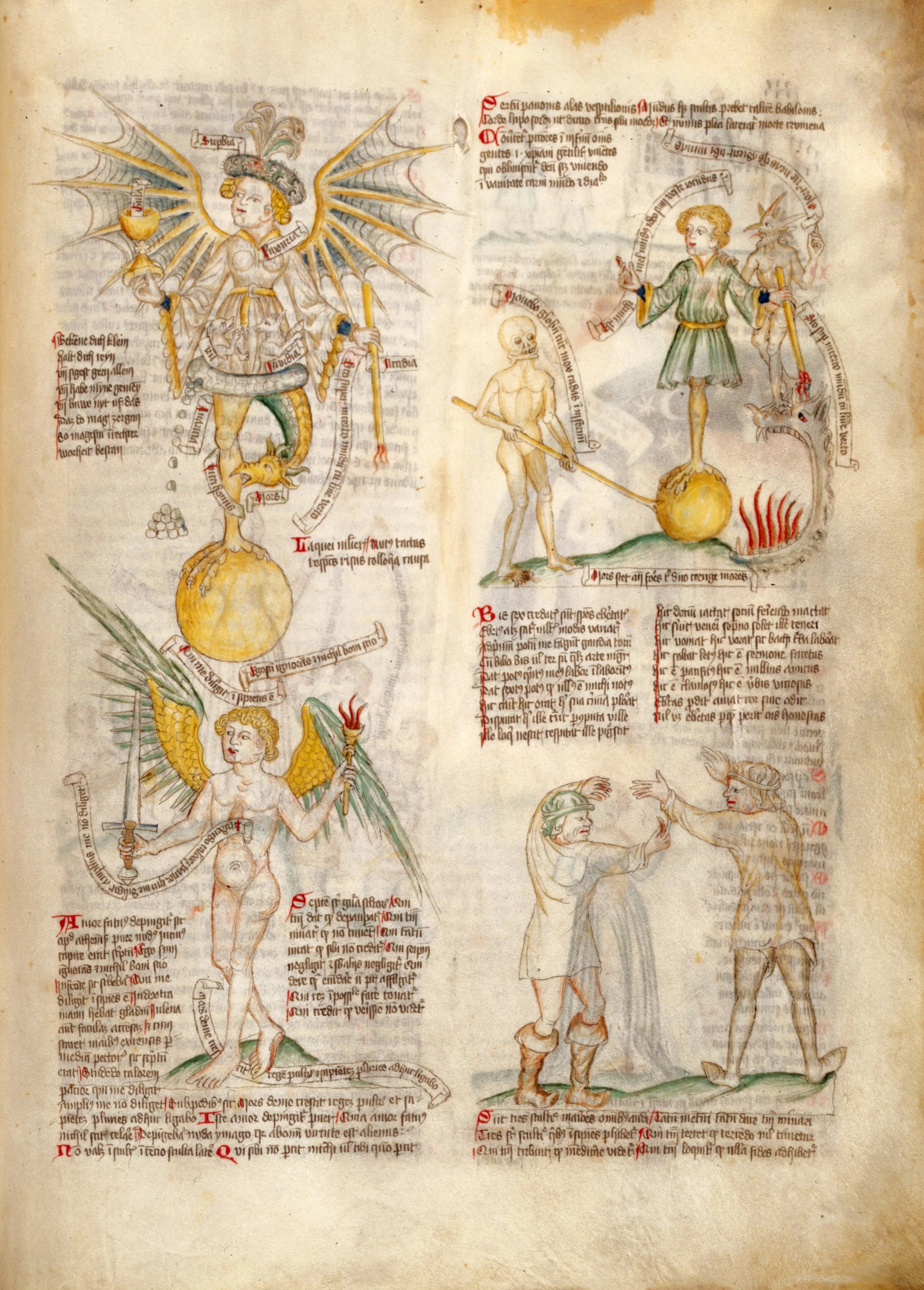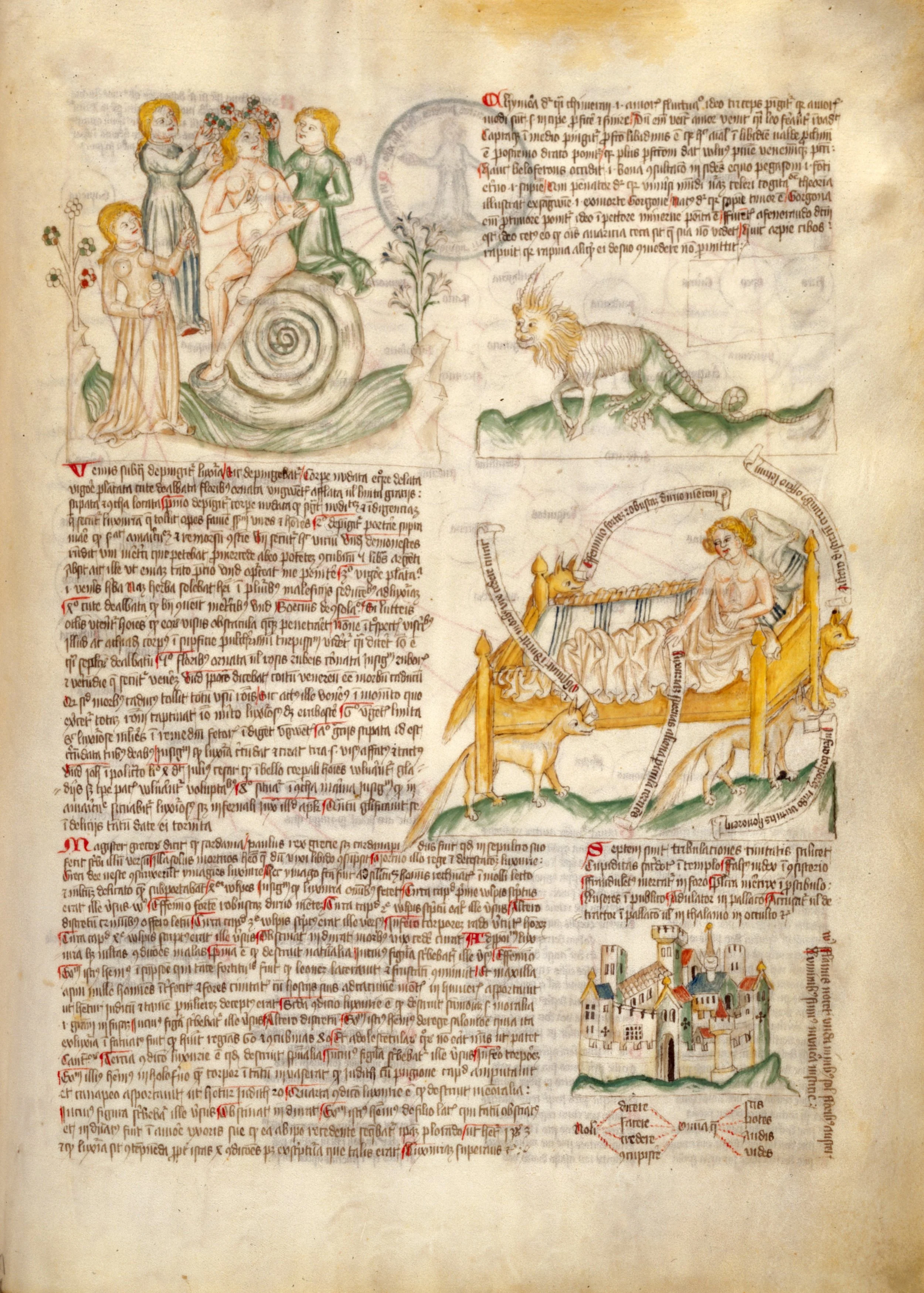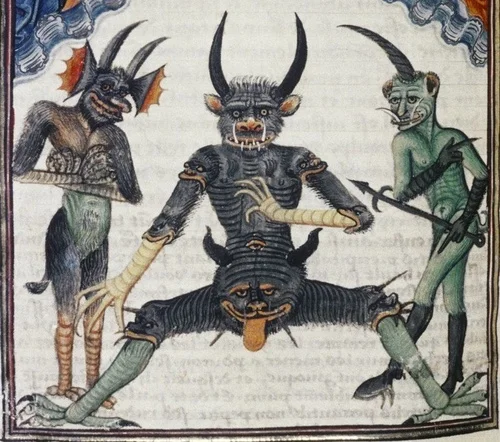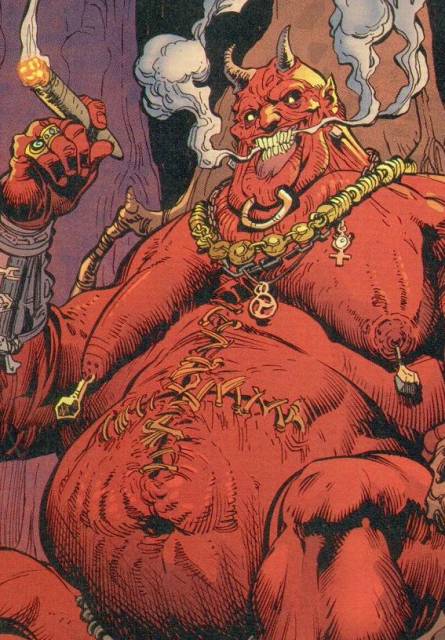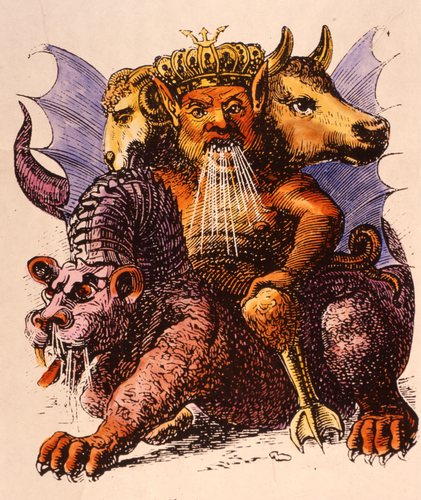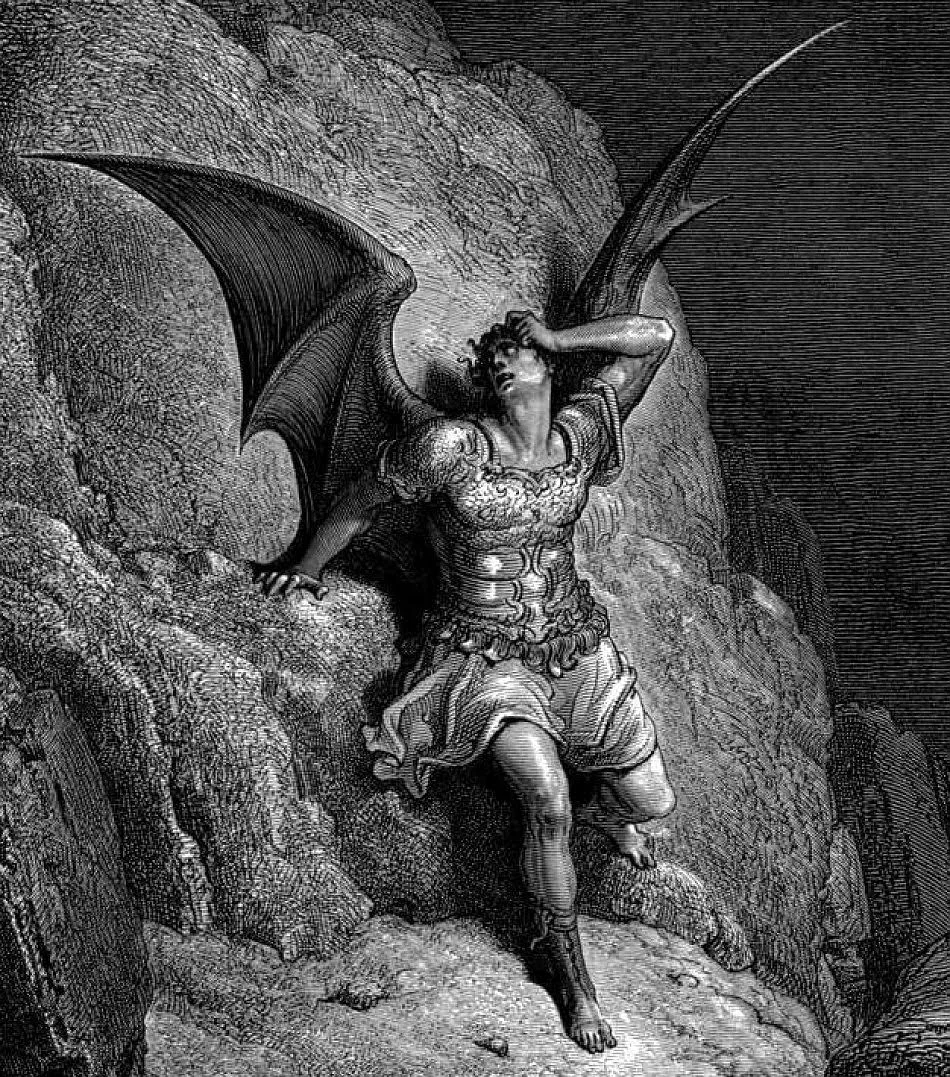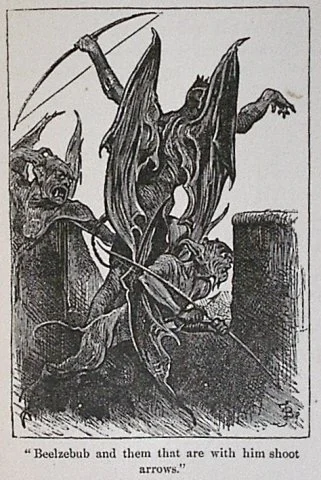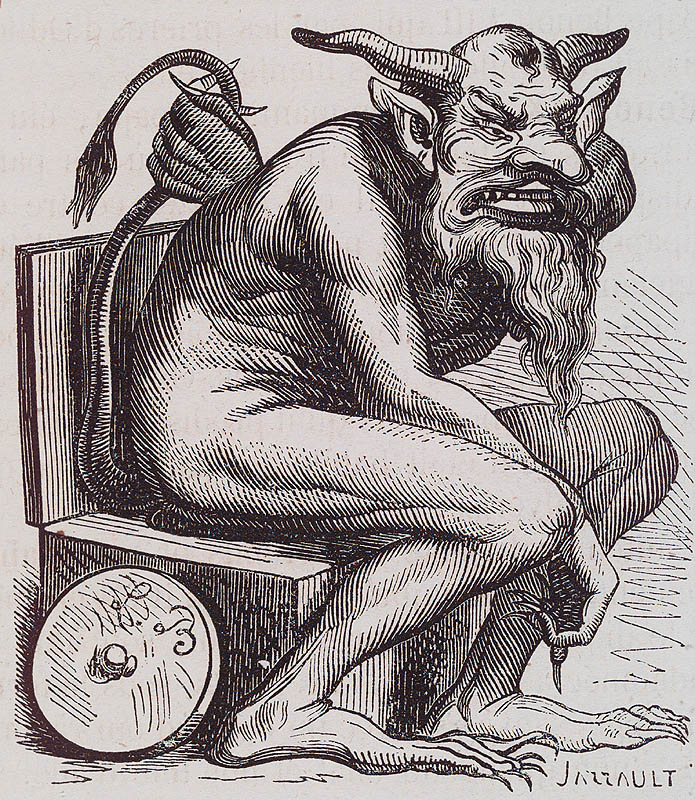Defeat the monsters of Supernatural Season 3, Episode 1 with the help of palo santo.
The Seven Deadly Sins and the Four Last Things is attributed to Hieronymus Bosch, though some scholars think it might be by one of his followers
S3E1: “The Magnificent Seven”
Monster: The Seven Deadly Sins (pride, envy, gluttony, lust, wrath, greed and sloth)
Where it’s from: Egypt, then Italy. In 375 CE, Evagrius Ponticus, one of the so-called Desert Monks, created a list of eight evil thoughts or temptations that lie at the heart of all sinful behavior. A couple of centuries later, in 590 CE, Pope Gregory I, known as Gregory the Great, refined the list to the seven we know today.
““You can repress and deny us all you want,” Envy says, “but the truth is you’re just animals. Hungry, greedy, horny, violent animals.””
Pieter Bruegel’s Lechery, part of a series of etchings and engravings from 1558 on each of the Deadly Sins
Pride by Bruegel, 1558
Description: On Supernatural, the demonic entities look a lot like the Smoke Monster from Lost. They flow into a person’s mouth and possess them, turning their hosts into personifications of the Seven Deadly Sins.
A page from an illuminated manuscript on the personification of the Seven Deadly Sins
This page shows the personification of lechery
What it does: There’s a cicada swarm at ground zero. How biblical. A family is found rotting away on their couch, having died of dehydration and starvation (that is, sloth). A woman gets touched by a man who puts a suggestion in her mind. She really, really likes a pair of shoes — enough to smash another woman’s head into a windshield (envy). Talk about fashion to die for.
And poor Isaac, another hunter, gets persuaded to chug-a-lug a big ol’ container of Drano (gluttony).
Envy insists that the supposed Deadly Sins are really natural human instincts: “You can repress and deny us all you want,” she says, “but the truth is you’re just animals. Hungry, greedy, horny, violent animals.”
Binsfeld’s Classification of Demons
In 1589 the German bishop and notorious witch hunter Peter Binsfeld paired each of the Deadly Sins with a demon who uses it to tempt people.
Lucifer: Pride
Lucifer was the first fallen angel (you know what they say about pride goeth-ing before a fall). He’s now the ruler of Hell and the Father of All Devils.
Mammon: Greed
One of the princes of Hell, Mammon literally means “money” in Hebrew.
Asmodeus (Asmodai): Lust
There must be some power struggles in the fiery pits, because Asmodeus is known as the King of the Nine Hells. He’s described as being quite the mishmash of animal parts in the Dictionnaire Infernal by J. Collin de Plancy: three heads (a man spitting fire, a sheep and a bull), the torso of a man, one rooster leg and a serpent’s tail. As if that’s not enough, he rides a lion that has a dragon’s neck and wings.
Satan: Wrath
One of the highest-ranking demons of Hell and certainly the best-known today (he’s become synonymous with the Devil).
Beelzebub: Gluttony
Not surprisingly, the Lord of the Flies looks like a disgustingly large fly.
Leviathan: Envy
A sea monster thought by some to be a crocodile, though it later came to represent a whale. Its name means “twisted in folds,” leading many scholars to believe it’s a sea serpent.
Belphegor: Sloth
One of the Seven Princes of Hell, Belphegor is connected to sloth by Binsfeld, though others say he seduces people by giving them ingenious ideas for inventions that will make them rich and that he was originally worshiped as a phallus and was associated with orgies. In the Dictionnaire Infernal, he’s Hell’s ambassador to France.
How to defeat it: Palo santo, a holy wood from the coast of South America used by the Inca. It’s a mystical tree that’s part of the citrus family and related to frankincense and myrrh, according to Sacred Wood Essence. Not only is it good for keeping insects away, which is why it’s so popular in Ecuador and Peru, it cleanses an area, much like sage.
“Its smoke is so powerful that it has become a staple in sacred rituals, becoming an essential energy tool for shamans and saints alike,” writes the Energy Muse Blog.
In addition, “it provides an uplifting scent that raises your vibration in preparation for meditation and allows for a deeper connection to the source of all creation,” Sacred Wood Essence says. “It is also said that palo santo enhances creativity and brings good fortune to those who are open to its magic.”
If you’re dealing with someone possessed by a demon, you should always try the rite of exorcism. You’ve been practicing your Latin…right?
Getting saved in the nick of time by a mysterious girl with a magic demon-slaying blade certainly helps, too. –Wally
